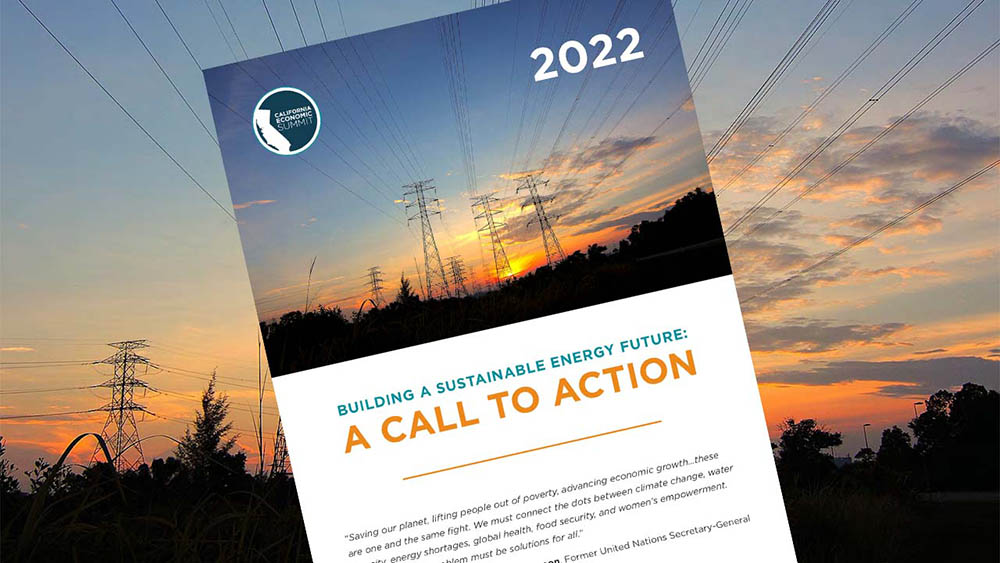
Today, CA FWD released its Energy Call to Action in advance of the 2022 California Economic Summit. As the state continues to chart a path toward carbon neutrality, this Call to Action provides context on California’s energy landscape and issues a set of recommendations to align state policy around a sustainable energy system that works for all Californians.
This past summer, California experienced an unprecedented heat-dome that lasted 10 days. California cities experienced temperatures that peaked at 125 degrees. In order to remain cool, Californians increased their energy consumption, which strained the electric grid and nearly resulted in rolling blackouts. This is one clear example of the complex, interrelated challenges presented by increasing temperatures and climate change broadly.
These events escalate the already urgent need to mitigate climate change by reducing greenhouse gas (GHG) emissions and adapting California’s energy system to meet changing demands. On this front, California has led the nation and the world with the introduction of policies that have brought an increasing amount of renewable energy resources online.
To move forward and successfully achieve its climate and energy goals, California must continue to move with a sense of urgency, while carefully evaluating its energy policies against four essential criteria:
- Sustainability
- Affordability
- Reliability
- Equity
Barriers to achieving these components within the existing energy system are many, but the importance of achieving this balanced approach is paramount.
“Energy is an economic issue that touches everyone in California. We cannot achieve an emissions-free energy system at the expense of reliability, or by accepting highest-in-the-nation prices which will fall disproportionately on our most vulnerable residents,” said CA FWD CEO Micah Weinberg. “This Call to Action presents a roadmap for progress to ensure all of the state’s diverse regions can move forward together with an energy system that is reflective of our triple-bottom-line approach of balancing the economy, the environment and equity.”
Building A Sustainable Energy Future: A Call to Action provides a framework for California to move forward with an urgency befitting the reality before us, and the awareness that we must question the siloed frameworks of the past if we are to bring all Californians forward with us into a healthier, more prosperous future:
We Must Act Urgently & Carefully. California needs to act with crisis-like urgency and break through the bureaucratic boxes that slow down how new energy generation and transmission projects are planned, permitted and built. But it must strategically calibrate its actions to ensure the energy system it creates is sustainable, reliable, affordable and equitable.
We Must Increase Renewable Energy Production & Be Technology Agnostic. California needs an energy approach that embraces the full range of carbon-free sources of energy to urgently address reliability, affordability and equity.
We Must Address Baseload Energy Today & For the Future. California needs a reliable grid, which will require a combination of dramatically increased storage, reconsidering nuclear energy and/or accelerating the deployment of geothermal power.
We Must Invest in Carbon Capture & Non-Carbon Energies. Carbon capture, sequestration and storage will help us mitigate carbon from the imperfect but necessary energies we still need today as we work to develop a diverse portfolio of zero-carbon energy sources for the future.
We Must Show Leadership & Share the Decision-Making. State policymakers and regulators have to make some hard choices and trade-offs and must engage regional collaboratives to equitably drive this change.
The Energy Call to Action will be featured as part of a broader conversation about California’s energy future at next week’s California Economic Summit. Please join us at the Summit–either in-person or online–by registering here.
CA FWD would like to acknowledge the contributions and thought leadership of experts from around the state who participated in developing this Energy Call to Action. We appreciate your feedback, time, and insights shared as part of this process.

